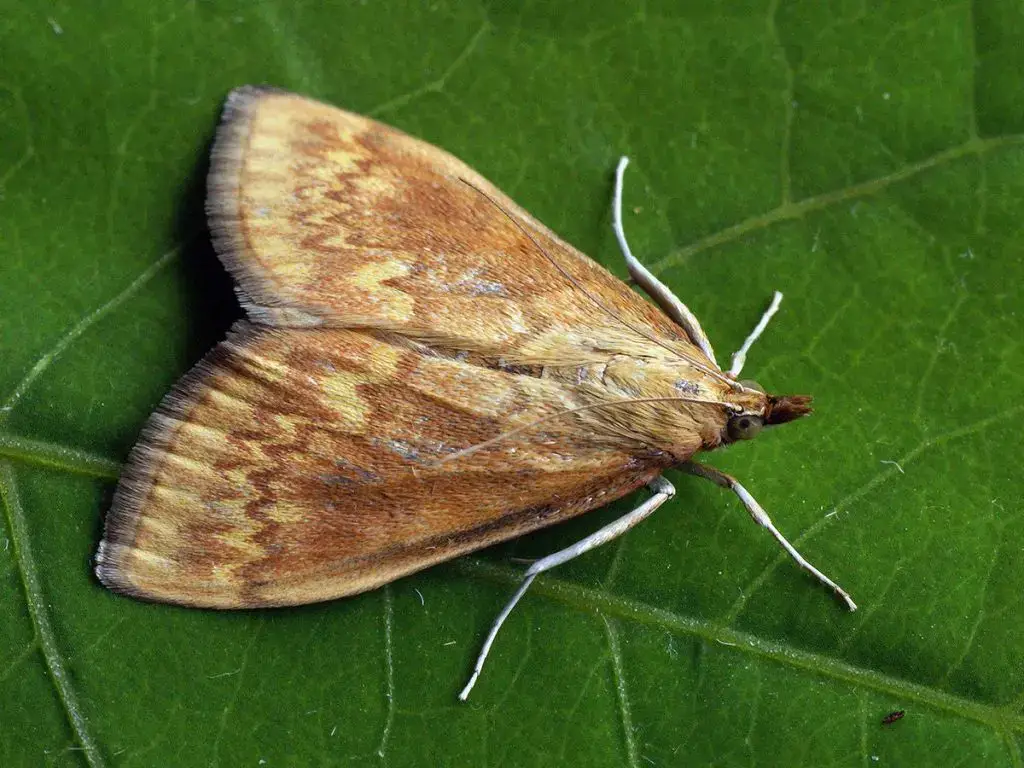When you have crops, you know that pests are one of the most serious problems you face. If among them you dedicate yourself to cereal, especially corn, there is an enemy number one, the so-called Ostrinia nubilalis . But what is this bug that can kill your crops?
Next we will talk about Ostrinia nubilalis , its characteristics, what it causes in crops and how to fight it so that it does not ruin the corn fields.
What is Ostrinia nubilalis

The Ostrinia nubilalis , known as corn drill is actually a very dangerous pest for cereal, especially in the case of corn. However, recent studies have determined that it can also attack other crops, such as strawberry, apple or pepper. In fact, it is known to be capable of feeding on up to 200 species of plants. It is native to Europe, but right now it is suffered both on this continent and in North Africa and North America, where it was introduced and was first detected in 1917.
The corn borer has a life cycle that changes from egg to larva, and from larva to adult. When they are eggs, these are almost flat, since they are only one millimeter in diameter and are white at first, turning yellow at the end. The larva lives inside them and only when they are about to hatch do they have a visible black head. These eggs are usually laid in groups of 30 and take 3 to 12 days to hatch.
When the larvae are born, they begin to grow and can reach up to 25mm, with a purple-brown body and spots; although its head remains black or dark brown. The next step is the pupae, which are 2cm long, brown in different shades, ranging from light to dark red.
Finally, the adult specimens can measure 22-32 mm and have yellow or light brown wings, with other later ones in light gray with spots.
There are clear differences between males and females. For example, females are larger than males and have a darker, yellowish-brown color with darker, irregular stripes on the wing.
How does Ostrinia nubilalis appear
The adult Ostrinia nubilalis appears in Europe in the month of June, however, the larvae are very likely to spend the winter in hiding and getting fat and then undergo metamorphosis to become adult specimens.
Eggs are normally laid by females on the underside of leaves. When the larvae hatch, they do so in the leaves and then reach the top of the plant. There they manage to penetrate the internodes of the stem. They begin to create galleries indoors, which they will use to hibernate indoors, but also for transformation before they begin to fully damage the plant.
What symptoms and damages does Ostrinia nubilalis produce?

If you have a field of corn, millet or one of the 200 species of plants capable of attacking Ostrinia nubilalis , then it is very important that you detect the symptoms that this pest produces in order to act in time. One of these signs is undoubtedly lines of holes, which are arranged horizontally, in the newest leaves of the plant. This occurs because the larvae feed on it. In addition, if you look a little closer, you will also see droppings and small holes in the part of the stems or even in the apical area of the cob.
When the larvae enter the interior of the plant, what it does is weaken it, causing it to grow much less, to offer ears with fewer grams of corn and to be even weaker, to the point of causing them to break in the wind. This is because, inside, the larvae consumes the vascular tissue of that plant, until it finally kills it.
How to fight the plague

When you dedicate yourself to the cultivation of corn, or any of the plants that can suffer from the Ostrinia nubilalis plague , it is usual to be prepared and vigilant before any aspect that may make us suspect that there is a problem in the plants. Normally the greatest damage caused by this pest occurs in the first generation. That is, when they are larvae, because that is when they are capable of ending the life of the plant. However, that does not mean that it is not dangerous afterwards. And it can be attacking the rest of the corn plants or other crops.
Therefore, when it comes to fighting the plague, the most effective are usually the chemicals that would attack these bugs with the aim of ending it in the shortest possible time so that it does not do more damage to the plants. Now, it is not the only solution available.
Also available compounds by biological controls Hymenoptera parasitoids like Trichogramma, a fungus, Beauveria bassiana; or a protozoan, the Nosema Pyrausta.
And finally, there is the possibility of growing a transgenic corn that has been modified in its genome. What they have done is to include a kind of insecticidal gene against the bacterium Bacillus thuringiensis, capable of killing not only Ostrinia nubilalis, but also Lepidoptera larvae.
Another of the actions that many carry out is to destroy the reeds that are infected . Or even those around it, to avoid a proliferation of this pest in other plants. It can be effective as long as it occurs in the early stages but, when it is an adult specimen, this can be more difficult to tackle with this method.
Without a doubt we are talking about a rather serious problem for crops . But that has a solution as long as it is caught in time to avoid greater evils in the crop (since the plague is capable of destroying the entire field). For this reason, the observation and surveillance of plants is so important, in order to detect it before a greater evil.

